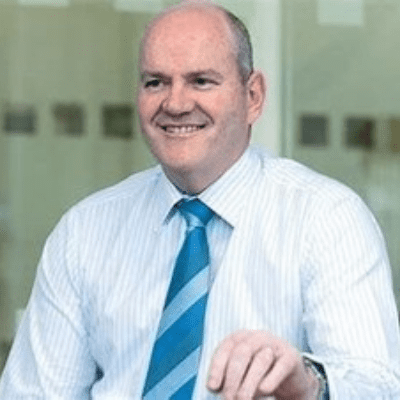Proving the ROI of digital transformation in HR
In this on-demand webinar, HR practitioners discuss how to prove the ROI of digital HR to win stakeholder buy-in.
A precise, well-crafted and accurate business case is critical to win approval and acquire game-changing tech.
Adoption is often the biggest barrier to successful HR projects - pilots can be your secret weapon to avoid failure.





Over the last 12 months we’ve witnessed how the right technology and digital roadmap can be a game-changer for HR when faced with huge operational challenges. Yet despite the pandemic catapulting the importance of digital into the spotlight, when budgets are tight it can still be a challenge to get the green light on new investment.
So how do you prove the value and ROI of digital HR and win key stakeholder buy-in for investment? What are the key steps that HR should consider when implementing new tech and managing a project of change, and how do you measure the impact of new software on HR and the wider business?
This was the topic of discussion at a recent UNLEASH webinar held in partnership with IRIS Software. The session, moderated by Kate Graham, Head of Content Labs and Insight at UNLEASH featured global experts and thought leaders in HR Tech and digital transformation.
Watch on-demand to hear about key themes, including:
Your business case must be precise, direct and accurate to prove ROI and win stakeholder buy in
You’ve got to remember that asking a CEO for money at this time is like challenging a mama grizzly bear for one of her cubs, you’ve got to be very precise, very direct and very accurate in terms of how you go about asking for it
Kevin Craven, Strategic Partnership Director at Serco Plc, a leading provider of public services based in the UK, kick-started the webcast by bringing us back to the reality of today’s world of work:
“You’ve got to remember that asking a CEO for money at this time is like challenging a mama grizzly bear for one of her cubs, you’ve got to be very precise, very direct and very accurate in terms of how you go about asking for it” Craven explained.
Before pitching a new investment to leadership, make sure you fully understand the problem you are trying to solve and exactly how the solution you would like to propose will provide the answers you need.
Next, you must make sure you have a thorough understanding of the business case, where the costs will be and where the benefits will flow, Craven explained.
“There is absolutely nothing worse than having to go back to a senior stakeholder and say, ‘I’m sorry, I’ve miscalculated the costs of implementation’, or ‘the people change costs are going to be higher than the first envisage’ – it just destroys your credibility instantly,” he added.
Don’t plan for now, plan for the future
You don’t want to buy a solution that will cost the earth if you grow, so factor that into your discussions when you’re looking at the technology.
As you begin your journey towards digital transformation, it is crucial that you plan for the future rather than the present. Zoe Brunswick, HR Director at RSK Group, a fast paced and growing global engineering company explained how important this is when pitching for stakeholder buy-in:
“Think about what’s that business trajectory and what’s your growth plan,” Brunswick commented. “You don’t want to buy a solution that will cost the earth if you grow, so factor that into your discussions when you’re looking at the technology.”
But how can we predict the future when we are living and working in the era of change? How do we prepare for detailed ROI calculations whilst at the same time committing to an agile delivery method that can adapt to new situations?
These questions were scrutinized by the panel of experts who agreed that scenario planning and mapping out different possibilities was of paramount importance to survive these tumultuous times.
Don’t overlook the importance of a pilot
Historically, one of the big reasons HR tech projects fail in terms of their ROI is adoption explained Andrew Inge, an experienced digital implementation professional working in Human Capital at Deloitte. You can spend millions on a shiny new piece of new tech but if no one uses it, it has no ROI.
Inge went on to explain that, although it is often overlooked, doing a pilot is invaluable when it comes to adoption and making the full roll-out as successful as possible.
“It gives you’re the opportunity to test it, sort out your theories as to what might work well with the organization in real life, gather feedback and make adjustments accordingly before you go ‘big bang’ across the whole organization,” Inge commented.
Nail the culture shift to maximize your ROI
Towards the end of the webinar, Caroline Gammon, HCM Market Specialist at IRIS reminded the audience that, as well as focussing on pilots, in order to increase adoption and project success, we must prepare for the culture shift that is caused by transformation.
“Making it a celebration, making people excited about launching a new system, and really bringing some color to what you’re doing – that’s what gets engagement.” Gammon commented.
A HR system transformation with high ROI alters the very core of an organization irrevocably. It changes workflows, enhances wellbeing and impacts the workforce on a day-to-day basis.
“Companies could go around the project and just put in the processes as they are, or they could take advantage of remapping processes: making them simpler, making them more modern, bringing them into the hybrid world of working, which now requires different processes.” Gammon explained.
HR must take advantage of transformation by recognizing and focusing on the culture shift and making their organizations great places to work.
